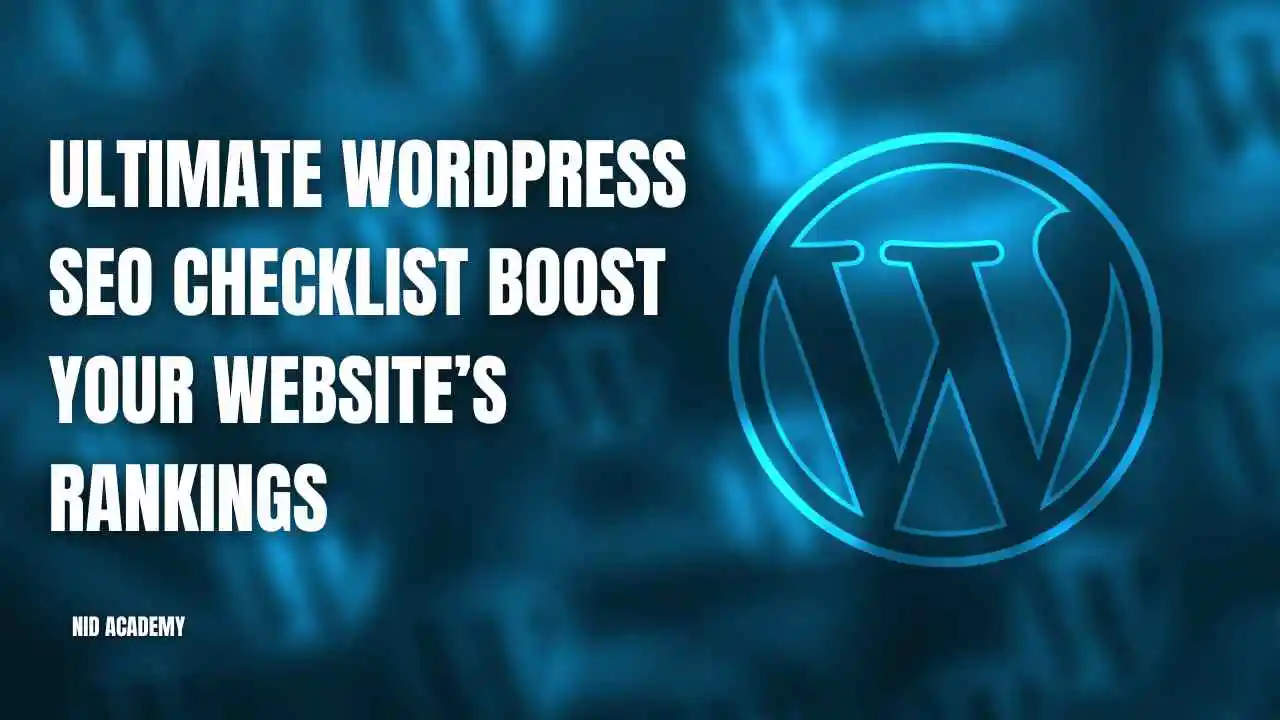Ultimate WordPress SEO Checklist: Boost Your Website’s Rankings 2023
Welcome to the ultimate WordPress SEO checklist! If you want to improve your website’s visibility and boost its rankings on search engine results pages (SERPs), you’re in the right place. In this comprehensive guide, we’ll cover all the essential steps to optimize your WordPress website for search engines. Whether you’re a beginner or an experienced user, this checklist will help you achieve better SEO results and outrank your competitors.
Table of Contents
1. Understanding the Importance of WordPress SEO
In today’s digital landscape, having a strong online presence is crucial for the success of any website. Search engine optimization (SEO) plays a vital role in improving your website’s visibility and attracting organic traffic. By implementing effective SEO strategies, you can increase your chances of ranking higher on search engine results pages, leading to more exposure, increased website traffic, and potential conversions.
2. Setting Up and Configuring WordPress for SEO
To start optimizing your website WordPress SEO, you need to ensure that your website is properly set up and configured. Here are some essential steps to follow:
Choose a Reliable WordPress Hosting Provider
The foundation of your website’s performance lies in selecting the right hosting provider. Look for a reputable hosting company that offers excellent uptime, fast loading speeds, and reliable customer support.
Install a SEO-Friendly WordPress Theme
Selecting a well-coded and SEO-friendly WordPress theme is crucial. It should be responsive, lightweight, and optimized for speed. A good theme will ensure that your website performs well in search rankings.
Install an SEO Plugin
Utilize a powerful SEO plugin like Yoast SEO or Rank Math to help you optimize your website effortlessly. These plugins offer features such as XML sitemap generation, meta tag optimization, and social media integration.
3. Optimizing Your WordPress Site Structure
A well-organized site structure helps search engines crawl and index your website effectively. Follow these steps to optimize your site structure:
Create an XML Sitemap
Generate an XML sitemap using a plugin like Yoast SEO or Rank Math. This sitemap will help search engines discover and index all your website’s pages efficiently.
Set Up a Permalink Structure
WordPress allows you to customize your permalink structure. Opt for a structure that includes relevant keywords and is easy to read for both search engines and users.
Use Categories and Tags Wisely
Organize your content using categories and tags appropriately. This helps search engines understand the context of your content and improves user experience through easy navigation.
4. Conducting Keyword Research for Targeted Traffic
Keyword research is a fundamental step in any SEO strategy. It helps you identify the search terms your target audience is using to find information online. Here’s how to conduct effective keyword research:
Brainstorm Relevant Topics
Think about the topics and themes that are relevant to your website and industry. Consider the problems
your target audience is trying to solve and the questions they may have.
Use Keyword Research Tools
Utilize keyword research tools like Google Keyword Planner, SEMrush, or Ahrefs to discover popular and relevant keywords related to your topics. Focus on long-tail keywords with moderate search volume and low competition.
Analyze Competitor Keywords
Research your competitors’ websites and identify the keywords they are targeting. This will give you insights into their SEO strategy and help you uncover new keyword opportunities.
5. Crafting Engaging and SEO-Friendly Content
Creating high-quality content that engages your audience is crucial for SEO success. Follow these tips to craft compelling content:
Write for Your Audience
Understand your target audience and create content that addresses their needs, interests, and pain points. Write in a conversational tone, using personal pronouns to establish a connection with your readers.
Incorporate Relevant Keywords
Integrate your target keywords naturally into your content, including in headings, subheadings, and throughout the body. However, avoid keyword stuffing, as it can negatively impact your rankings.
Use Engaging Headlines and Subheadings
Craft attention-grabbing headlines and subheadings that accurately represent the content. Use descriptive and keyword-rich headings to improve readability and help search engines understand your content structure.
6. Enhancing On-Page SEO Factors
Optimizing your on-page SEO factors is crucial for search engine visibility. Consider the following techniques:
Optimize Meta Titles and Descriptions
Write compelling meta titles and descriptions that include your target keywords and accurately summarize your content. Keep them within the recommended character limits to ensure they display properly on search engine result pages.
Utilize Header Tags
Use header tags (H1, H2, H3, etc.) to structure your content effectively. The H1 tag should represent the main heading of your page or article, while the subsequent tags should be used for subheadings and sub-sections.
Optimize Image Alt Text
Add descriptive alt text to your images, representing the contents, mood, or theme of the article. Alt text helps search engines understand your images and improves accessibility for visually impaired users.


